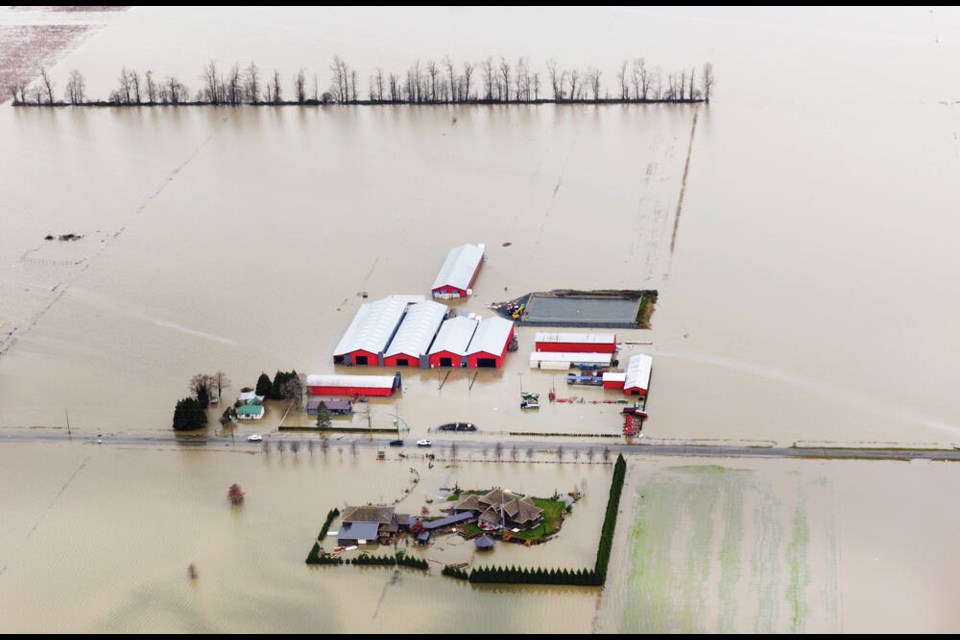The advance of the climate crisis, marked by its extremes — droughts or deluges, fires or floods — makes abundantly clear the human habit of trying to contain and control water isn’t working.
For her new book, Water Always Wins, Victoria-based National Geographic Explorer Erica Gies criss-crossed the globe, witnessing some of the unanticipated results of modern society’s preference for engineered solutions.
The tendency to hem water in and wrestle to alter its natural course with enormous dams and ever-higher dikes, straightened rivers and hardened shores often exacerbate the symptoms of global warming, the environmental journalist found.
But an array of microbes, animals and communities enjoy beneficial relationships with this vital element by harmonizing with water’s wishes, Gies discovered.
As such, her book explores hopeful and resilient approaches to working with water that respect its natural flow and rhythms, with positive outcomes for humans, biodiversity and the climate.
So, what does water want?
“Basically, what water wants is a return to its slow phases that we have dramatically eradicated with much of our development,” Gies said.
As much as 87 per cent of the world’s wetlands have been eradicated since the 1700s, and humans have heavily encroached on floodplains worldwide, risking homes and businesses should water reassert its return, she said.
“[But] I met all these people around the world seeking to restore, protect or re-create in some way wetlands, floodplains, high-altitude mountain meadows or forests that generate rain — all the things that slow water on the land,” Gies said.
There are many examples of the folly associated with interfering with the natural filter, trickle or spread of water, Gies said, pointing to California, the poster child of perpetual drought.
“California is arguably the apex of water engineering hubris,” Gies said.
Since the mid-19th century, the corralling of two great watercourses, the Sacramento and the San Joaquin rivers, has eliminated the historic annual flushing of the Central Valley — once a vast floodplain — drying it out and denying vital aquifers below an opportunity to top themselves up, she said.
Compounding the problem, the rivers’ water is funnelled vast distances across the state while the region’s groundwater is heavily tapped to fuel California’s vast agricultural empire — helping to create a critical shortage of water in areas where it once existed in abundance.
Surface water and groundwater are entwined, Gies said.
“We have deprived the natural recharge that happens when the water slows on those lands and moves underground,” she said. And in reverse, stressed aquifers can’t help recharge rivers and tributaries at the surface during the dry season.
“For a long time, California had this sort of political attitude that they were dealing with two separate sources of water that could be regulated independently, or in the case of groundwater, not regulated [at all].”
In her book, Gies digs into ingenious ways of working with, rather than against, water.
But some of the world’s most insightful water engineers are familiar to most Canadians, she said.
“Canadians may take beavers for granted, and in some places might even think of them as pests,” she said. “But beavers are incredibly important for the health of the hydrological cycle, and they’re being used in different places around the world to help protect against drought, wildfire and also flooding.”
Gies dedicates a full chapter to the multitude of ways we can better our relationship with water by relying on and living with beavers.
The skill of these once ubiquitous mammals has been recognized by U.S. authorities, who on various occasions in the past parachuted beavers into wilderness areas to restore watersheds.
The U.K. is also conducting controlled trials using the animals to slow water along river systems and prevent flooding, Gies said, but some folks aren’t waiting for official outcomes.
“Some people have been releasing wild beavers illegally. Guerrilla beavering, if you will, because of their ability to heal ecosystems.”
The recent devastation from flooding across B.C., and Abbotsford in particular, last November on the heels of record-breaking rains is a case study of how primarily relying on built solutions to contain water will be limited or increasingly expensive in the era of climate change, Gies said.
Farmland in Abbotsford was developed by draining Sumas Lake and the surrounding floodplain and building dikes and pump stations.
“As we saw with the atmospheric river, those engineering interventions can only hold up so far and then they fail when water retakes its territory.”
Rather than resorting to our ingrained habit of investing millions or billions into increasing infrastructure, it might be cheaper and easier to take a path of least resistance, she said.
“I think they need to consider giving water some space,” she said.
“I’m not saying that there shouldn’t be any farming in that area anymore, but maybe there’s some marginal farmland that should be returned to the water.”
Respecting water’s ebb and flow sometimes involves giving a little to get a lot, she said.
Slow-water projects, principles, and solutions are unique to each location, community, and culture, she added.
But there are some common principles.
“Basically, it’s down to each area to look at what is going to work best in their space,” Gies said.
“And I think it’s really about respecting water and appreciating the benefits that collaboration can bring.”



